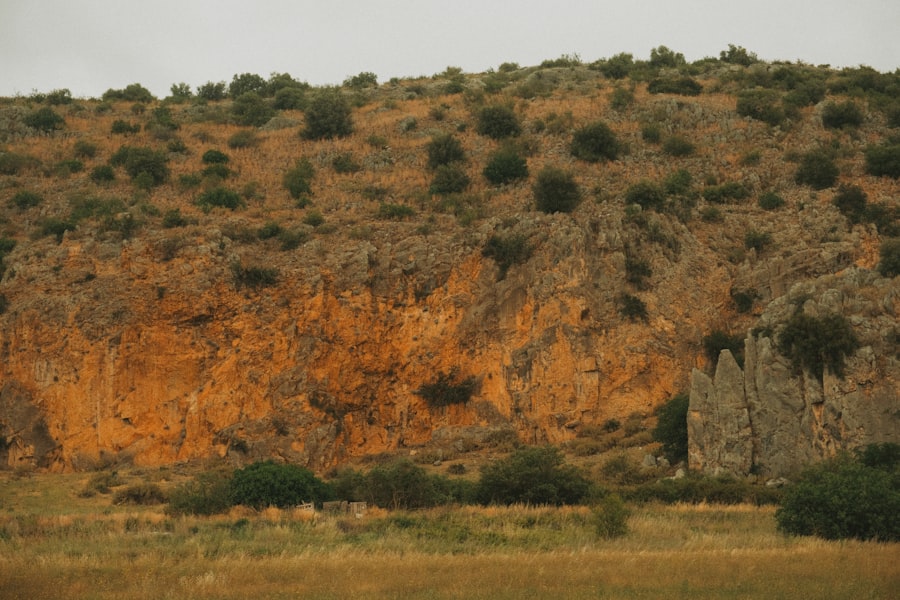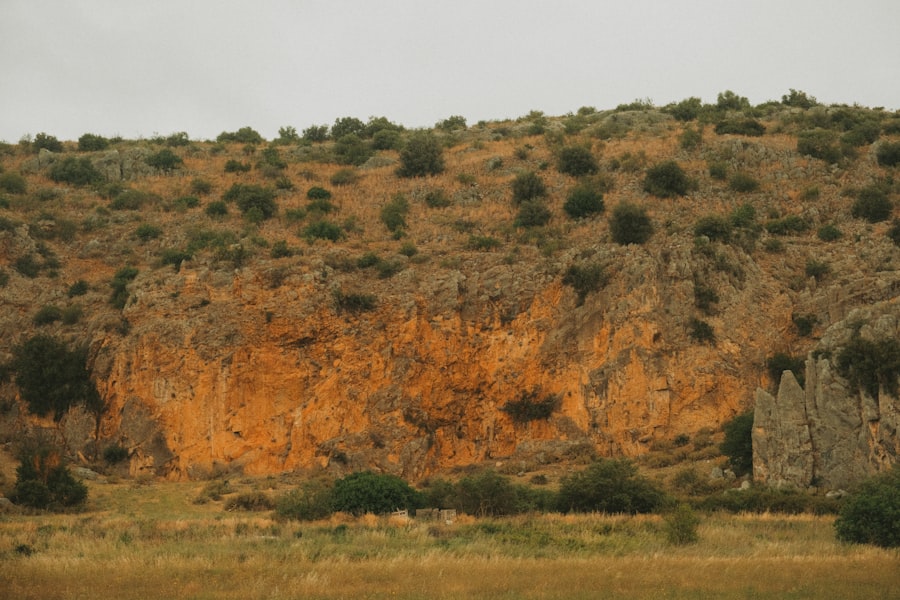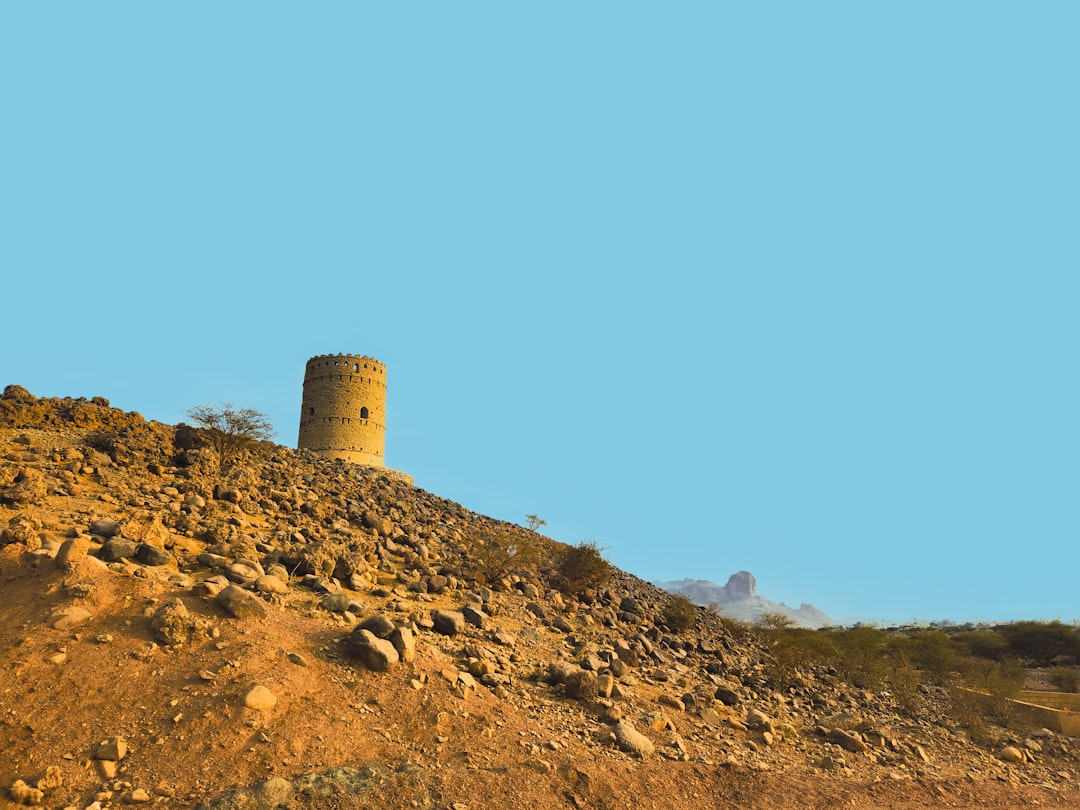The Kola Borehole, a scientific endeavor that delved deep into the Earth’s crust, has become the epicenter of a chilling urban legend. According to the tale, during the drilling process, researchers allegedly captured sounds that resembled anguished screams from the depths of Hell. This narrative has captivated the imaginations of many, transforming a scientific project into a source of fear and intrigue.
The legend suggests that the sounds were the cries of tormented souls, trapped in the underworld, and it has been passed down through generations, often embellished with each retelling. As the story spread, it took on a life of its own, becoming a cautionary tale about the dangers of human curiosity and the unknown. The idea that scientists could inadvertently tap into a realm of suffering and despair struck a chord with those who enjoy tales of the macabre.
The Kola Borehole legend serves as a reminder of humanity’s fascination with the supernatural and the mysteries that lie beneath the surface of our world. It raises questions about what lies beyond our understanding and whether some things are better left undisturbed.
Key Takeaways
- The “screams from hell” legend surrounding the Kola Borehole is a popular urban myth that has captured the imagination of many.
- The strange sounds attributed to the Kola Borehole can be explained by natural geological processes and the equipment used in the drilling.
- The Kola Borehole is a real scientific endeavor that was conducted in the 1970s and 1980s by the Soviet Union to study the Earth’s crust.
- The myth of the “screams from hell” at the Kola Borehole can be debunked by understanding the actual scientific and technical aspects of the drilling project.
- Urban legends like the Kola Borehole myth can have a lasting impact on popular culture and can perpetuate misinformation if not critically examined.
The Scientific Explanation Behind the Kola Borehole Sounds
While the legend of the Kola Borehole screams has captured public attention, scientific explanations provide a more grounded understanding of what actually occurred during the drilling process. The Kola Superdeep Borehole, initiated in 1970 by Soviet scientists, aimed to explore the Earth’s crust and gather geological data. As they drilled deeper, they encountered various geological formations that produced sounds due to the intense pressure and heat.
These sounds were not cries from the underworld but rather natural acoustic phenomena resulting from the interaction of drilling equipment with rock layers. Geophysicists explain that the sounds recorded during drilling can be attributed to a variety of factors, including vibrations from machinery, rock fracturing, and gas emissions. The intense heat at such depths can also cause changes in material properties, leading to unique acoustic signatures.
Thus, what some interpreted as eerie screams were simply the byproducts of scientific exploration, devoid of any supernatural implications. This scientific perspective demystifies the legend and highlights the importance of understanding natural phenomena through empirical evidence.
The History of the Kola Borehole and its Exploration

The Kola Superdeep Borehole project began in 1970 as part of a Soviet initiative to study the Earth’s crust. Located on the Kola Peninsula in Russia, this ambitious undertaking aimed to reach a depth of 15 kilometers, making it one of the deepest man-made holes on Earth. The project was driven by a desire to understand geological processes and gain insights into the Earth’s composition.
Over the years, scientists encountered numerous challenges, including extreme temperatures and unexpected geological formations. As drilling progressed, researchers made significant discoveries about the Earth’s crust, including finding ancient microorganisms trapped in rock layers and uncovering information about tectonic activity. However, despite its scientific achievements, the project was eventually halted in 1992 due to a lack of funding and changing priorities in post-Soviet Russia.
The Kola Borehole remains a testament to human curiosity and ambition, representing both the triumphs and limitations of scientific exploration.
Debunking the Myth: What Really Caused the “Screams”
| Event | Explanation |
|---|---|
| Alleged “Screams” | Actually the sound of a fox |
| Witnesses | Multiple people reported hearing the “screams” |
| Location | Occurred in a wooded area |
| Time | During the night |
To debunk the myth surrounding the Kola Borehole screams, one must examine the evidence and context surrounding these claims. The sounds attributed to anguished souls were recorded during drilling operations but were never scientifically verified as anything other than natural acoustic phenomena. Researchers have clarified that these sounds were likely caused by mechanical vibrations and geological activity rather than supernatural forces.
Moreover, many accounts of the “screams” have been sensationalized over time, often lacking credible sources or scientific backing.
By analyzing these recordings through a scientific lens, it becomes clear that they do not support claims of paranormal activity or otherworldly encounters.
Instead, they reflect the complexities of geological exploration and serve as a reminder of how easily myths can arise from misunderstandings.
The Role of Urban Legends in Perpetuating the Kola Borehole Myth
Urban legends often thrive on fear and fascination with the unknown, and the Kola Borehole myth is no exception. These stories tend to evolve over time, gaining embellishments that enhance their intrigue while straying further from factual accuracy. The legend surrounding the Kola Borehole taps into deep-seated fears about what lies beneath our feet and humanity’s hubris in seeking knowledge beyond its grasp.
The allure of urban legends lies in their ability to provoke emotional responses and spark curiosity. In this case, the idea that scientists could inadvertently unleash something malevolent from deep within the Earth resonates with cultural narratives about forbidden knowledge and consequences for human transgressions. As such tales circulate through word-of-mouth and media channels, they become ingrained in popular culture, often overshadowing factual accounts with sensationalized interpretations.
Exploring the Psychological Impact of the Kola Borehole Legend

The psychological impact of urban legends like that of the Kola Borehole can be profound.
The notion that there are hidden realms beneath our feet where tormented souls reside can provoke anxiety and existential dread.
This legend serves as a reminder of humanity’s struggle to comprehend mortality and what may lie beyond life. Moreover, urban legends can influence behavior and decision-making. Individuals may become more cautious or fearful about scientific exploration or technological advancements when confronted with tales that suggest dire consequences for human curiosity.
The Kola Borehole legend exemplifies how folklore can shape perceptions of science and technology, often leading to skepticism or mistrust in legitimate research endeavors.
The Influence of Popular Culture on the Kola Borehole Myth
Popular culture plays a significant role in shaping and perpetuating urban legends like that of the Kola Borehole screams. Movies, television shows, and online content often draw inspiration from such myths, amplifying their reach and embedding them further into public consciousness. The portrayal of supernatural elements associated with scientific exploration can create a compelling narrative that captivates audiences while distorting factual accuracy.
In various forms of media, the Kola Borehole has been depicted as a gateway to Hell or a site where dark forces are unleashed upon unsuspecting researchers. These dramatizations contribute to a culture of fear surrounding scientific inquiry and exploration while simultaneously romanticizing danger and mystery. As these narratives circulate through popular culture, they reinforce existing beliefs about the supernatural while overshadowing scientific understanding.
The Importance of Critical Thinking in Debunking Urban Legends
Critical thinking is essential when confronting urban legends like that of the Kola Borehole screams. By applying analytical skills and questioning assumptions, individuals can discern fact from fiction and avoid falling prey to sensationalized narratives. Engaging with credible sources and seeking evidence-based explanations allows for a more nuanced understanding of complex topics like geology and scientific exploration.
Encouraging critical thinking also fosters a culture of skepticism toward unfounded claims. In an age where misinformation can spread rapidly through social media and other platforms, developing analytical skills is crucial for navigating an increasingly complex information landscape. By promoting critical thinking, society can cultivate informed citizens who are better equipped to challenge myths and engage with scientific discourse.
The Spread of the Kola Borehole Myth in the Age of the Internet
The advent of the internet has significantly accelerated the spread of urban legends like that surrounding the Kola Borehole. Online platforms provide fertile ground for myths to flourish as individuals share stories without verifying their authenticity. Social media allows for rapid dissemination of sensationalized accounts, often leading to widespread belief in unfounded claims.
In this digital age, misinformation can easily gain traction as users share content without critical evaluation. The Kola Borehole legend exemplifies how urban myths can evolve in online spaces, gaining new layers of complexity as they are retold across various platforms. This phenomenon underscores the importance of media literacy in discerning credible information from sensationalized narratives.
The Role of Skepticism in Investigating Paranormal Claims
Skepticism plays a vital role in investigating paranormal claims associated with urban legends like that of the Kola Borehole screams. A skeptical approach encourages individuals to question extraordinary assertions and seek evidence before accepting them as truth. This mindset is essential for distinguishing between scientifically grounded explanations and sensationalized myths.
By fostering skepticism toward paranormal claims, individuals can engage more critically with narratives that evoke fear or intrigue. This approach not only promotes scientific literacy but also empowers individuals to challenge unfounded beliefs that may perpetuate misinformation or hinder progress in understanding complex phenomena.
Debunking Myths to Promote Scientific Understanding
Debunking myths like those surrounding the Kola Borehole is crucial for promoting scientific understanding and fostering informed discourse. By addressing misconceptions head-on and providing evidence-based explanations, society can cultivate an appreciation for scientific inquiry while dispelling fears rooted in folklore. Encouraging open dialogue about urban legends allows for greater awareness of how myths can distort perceptions of science and technology.
By prioritizing factual information over sensationalized narratives, individuals can develop a more nuanced understanding of complex topics while appreciating both the wonders and limitations of human exploration. In conclusion, while the legend of the Kola Borehole screams from Hell may continue to captivate imaginations, it is essential to approach such tales with critical thinking and skepticism. By examining both scientific explanations and cultural influences surrounding this myth, society can foster a deeper appreciation for knowledge while dispelling fears rooted in misunderstanding.
The Kola Borehole, often sensationalized as the “Screams from Hell” incident, has been a topic of intrigue and misinformation for years. However, this myth has been thoroughly debunked, revealing that the eerie sounds were nothing more than a hoax. For those interested in exploring more fascinating debunked myths and intriguing facts, you might want to check out a related article on the topic. Visit Hey Did You Know This for a deeper dive into similar stories and uncover the truth behind popular legends.
FAQs
What is the Kola Borehole?
The Kola Borehole is a deep hole drilled into the Earth’s crust in the Kola Peninsula of Russia. It is the deepest borehole ever drilled, reaching a depth of over 7.5 miles (12 kilometers).
What is the “screams from hell” myth associated with the Kola Borehole?
The “screams from hell” myth claims that when the Kola Borehole reached a certain depth, the scientists heard the sounds of tortured souls or demonic screams coming from the depths of the Earth, leading to speculation about the existence of hell.
Has the “screams from hell” myth been debunked?
Yes, the “screams from hell” myth associated with the Kola Borehole has been debunked. There is no scientific evidence to support the claim that the sounds heard were of supernatural origin. The sounds were likely caused by the equipment and the geological processes occurring at such extreme depths.
What were the actual sounds recorded at the Kola Borehole?
The sounds recorded at the Kola Borehole were likely the result of the drilling equipment and the movement of rocks and fluids deep within the Earth. These sounds were not of supernatural origin and were consistent with the expected geological processes at such depths.
What scientific discoveries were made as a result of the Kola Borehole project?
The Kola Borehole project provided valuable insights into the Earth’s crust and the processes occurring at extreme depths. It helped scientists study the composition, temperature, and pressure of the Earth’s crust, as well as the behavior of rocks and fluids at great depths. These findings have contributed to our understanding of the Earth’s geology and the processes that shape the planet.
